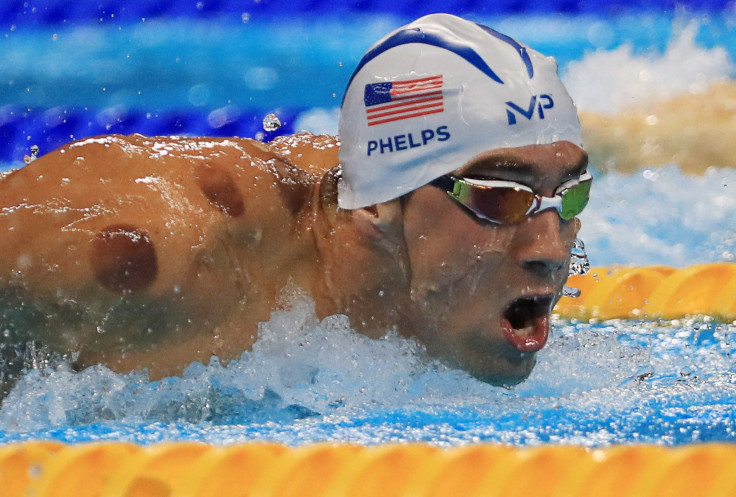Cupping Therapy Benefits Explained After Michael Phelps' Shoulder Bruises While Swimming

Michael Phelps won his 19th gold medal swimming the 4X100 meter freestyle with Team USA Sunday night in Rio — and with the whole world watching, there was no way the painful-looking bruises on his shoulders and back would go unnoticed. The ones that just so happened to be in a perfect circle.
NBC took to Twitter to explain that these marks were the end product of a healing technique called cupping. Like acupuncture, this therapy was developed in ancient China and has been practiced for more than 2,500 years as a way to improve blood flow and accelerate the healing process. Phelps reportedly swims for up to six hours each day during training cycles; practices “painful, but very effective” speed drills that include vertical and underwater kicking; and also hits the weights on dry land four to five days a week. It’s not a surprise that he’d be interested in fast tracking pain relief.
There are 10 different ways to perform the therapy, but the types we most often hear about fall under dry cupping (section only); wet cupping involves some medicinal bleeding. A cupuncturist or massage therapist uses fire to heat cups that draw the skin on a person’s back upwards, like a kind of vacuum to create suction. Cups stay in place between five and 15 minutes, the pressure of which can sometimes break blood vessels. So when the cup is removed, bright red rings linger and may still be there a couple weeks after the fact.
With improved circulation, Phelps and any other person receiving the therapy may notice a severe drop off in swelling, muscle aches, and chronic neck, shoulder, and back pain. The results of one study published in Evidence-Based Complementary and Alternative Medicine found that the “blood flow to the skin of the back in healthy humans on acupuncture points increased immediately following removal of the cup.” And in a 2015 study analysis of the therapy, authors Piyush Mehta and Vividha Dhapte said that improved blow means improved Qi, which is “ not only the vital energy of life but also the transferable energy…Cupping helps to extract blood from the body which may be harmful and in turn, overcome the potential adverse effects, leading to physiological well-being.”
But there are still some skeptics out there. The Russian state jokingly said it was a legal form of meladonium, the drug tennis player Maria Sharapova had in her system when she failed a recent drug test. Others believe there’s more anecdotal than actual science to prove it’s effective, while a 2012 study published in PLOS One said it works when combined with other therapies like acupuncture.
Professor Edzard Ernst, of the department of complementary medicine at the University of Exeter, might agree. He hasn’t seen any scientific evidence to prove cupping heals pain and other medical conditions, like fibromyalgia and irregular cardiac rhythms, but then there “have certainly been satisfied customers for 3,000 years."
Read more:
Acupuncture For Dementia. Read here.
Suffer from lower back pain? Try meditation. Read here.
New therapy for chronic pain offers hope for sufferers. Read here.
Published by Medicaldaily.com



























